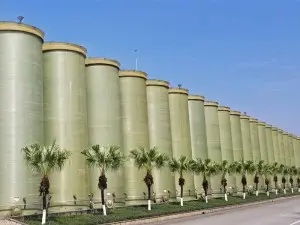
-
 Afrikaans
Afrikaans -
 Albanian
Albanian -
 Amharic
Amharic -
 Arabic
Arabic -
 Armenian
Armenian -
 Azerbaijani
Azerbaijani -
 Basque
Basque -
 Belarusian
Belarusian -
 Bengali
Bengali -
 Bosnian
Bosnian -
 Bulgarian
Bulgarian -
 Catalan
Catalan -
 Cebuano
Cebuano -
 China
China -
 China (Taiwan)
China (Taiwan) -
 Corsican
Corsican -
 Croatian
Croatian -
 Czech
Czech -
 Danish
Danish -
 Dutch
Dutch -
 English
English -
 Esperanto
Esperanto -
 Estonian
Estonian -
 Finnish
Finnish -
 French
French -
 Frisian
Frisian -
 Galician
Galician -
 Georgian
Georgian -
 German
German -
 Greek
Greek -
 Gujarati
Gujarati -
 Haitian Creole
Haitian Creole -
 hausa
hausa -
 hawaiian
hawaiian -
 Hebrew
Hebrew -
 Hindi
Hindi -
 Miao
Miao -
 Hungarian
Hungarian -
 Icelandic
Icelandic -
 igbo
igbo -
 Indonesian
Indonesian -
 irish
irish -
 Italian
Italian -
 Japanese
Japanese -
 Javanese
Javanese -
 Kannada
Kannada -
 kazakh
kazakh -
 Khmer
Khmer -
 Rwandese
Rwandese -
 Korean
Korean -
 Kurdish
Kurdish -
 Kyrgyz
Kyrgyz -
 Lao
Lao -
 Latin
Latin -
 Latvian
Latvian -
 Lithuanian
Lithuanian -
 Luxembourgish
Luxembourgish -
 Macedonian
Macedonian -
 Malgashi
Malgashi -
 Malay
Malay -
 Malayalam
Malayalam -
 Maltese
Maltese -
 Maori
Maori -
 Marathi
Marathi -
 Mongolian
Mongolian -
 Myanmar
Myanmar -
 Nepali
Nepali -
 Norwegian
Norwegian -
 Norwegian
Norwegian -
 Occitan
Occitan -
 Pashto
Pashto -
 Persian
Persian -
 Polish
Polish -
 Portuguese
Portuguese -
 Punjabi
Punjabi -
 Romanian
Romanian -
 Russian
Russian -
 Samoan
Samoan -
 Scottish Gaelic
Scottish Gaelic -
 Serbian
Serbian -
 Sesotho
Sesotho -
 Shona
Shona -
 Sindhi
Sindhi -
 Sinhala
Sinhala -
 Slovak
Slovak -
 Slovenian
Slovenian -
 Somali
Somali -
 Spanish
Spanish -
 Sundanese
Sundanese -
 Swahili
Swahili -
 Swedish
Swedish -
 Tagalog
Tagalog -
 Tajik
Tajik -
 Tamil
Tamil -
 Tatar
Tatar -
 Telugu
Telugu -
 Thai
Thai -
 Turkish
Turkish -
 Turkmen
Turkmen -
 Ukrainian
Ukrainian -
 Urdu
Urdu -
 Uighur
Uighur -
 Uzbek
Uzbek -
 Vietnamese
Vietnamese -
 Welsh
Welsh -
 Bantu
Bantu -
 Yiddish
Yiddish -
 Yoruba
Yoruba -
 Zulu
Zulu
fiberglass boat
The Versatility and Appeal of Fiberglass Boats
Fiberglass boats have revolutionized the maritime industry since their inception in the late 20th century. These boats are constructed using fiberglass reinforced plastic (FRP), which is a composite material made of plastic reinforced with fine fibers of glass. The unique properties of fiberglass make it an excellent choice for boat manufacturers and recreational boaters alike. In this article, we will explore the advantages of fiberglass boats, their various applications, and the reasons behind their growing popularity.
One of the primary advantages of fiberglass boats is their durability. Unlike wooden boats, which can suffer from rot and require frequent maintenance, fiberglass boats are resistant to environmental factors such as saltwater, sunlight, and moisture. This resilience means that once you invest in a fiberglass boat, you can expect it to last for many years with minimal upkeep. Regular cleaning and occasional waxing are usually sufficient to keep a fiberglass boat in good condition.
In addition to their durability, fiberglass boats are known for their lightweight nature. This characteristic makes them easier to maneuver, launch, and transport compared to heavier vessels made from materials like wood or metal. A lighter boat requires less power to propel, which can lead to fuel efficiency, making fiberglass boats an economical choice for longer trips on the water. The ease of handling is particularly beneficial for novice boaters and those who prefer to set sail without the extensive experience required for heavier vessels.
Fiberglass boats also offer a high degree of customization. Manufacturers can mold fiberglass into a variety of shapes and sizes, allowing for a wide range of designs suitable for different activities such as fishing, sailing, and recreational cruising. Whether you’re looking for a small dinghy, a luxurious yacht, or a sporty speedboat, there’s likely a fiberglass option available that meets your needs. This adaptability has made fiberglass boats popular among a diverse group of boaters.
fiberglass boat

Another appealing aspect of fiberglass boats is their smooth finish. The gel coat used in fiberglass production not only adds to the aesthetic appeal of the boat but also provides an extra layer of protection against the elements. The smooth surface minimizes drag while the boat is in motion, resulting in improved speed and performance on the water. Additionally, the sleek look of fiberglass boats often attracts attention, making them a stylish option for boaters who want to make a statement.
Moreover, fiberglass boats are generally more affordable than their wooden counterparts. While the initial cost may vary based on size and features, fiberglass maintenance costs are significantly lower over time. Wood boats require regular treatments to prevent decay and damage, whereas fiberglass boats typically do not have such stringent requirements. This cost efficiency is a crucial factor for many boaters when making their purchase decisions.
Despite all these advantages, it’s essential to recognize that fiberglass boats also have some drawbacks. For instance, they can be less repairable than traditional materials like wood. While fiberglass can be mended, the repair process can sometimes be more complex and may require professional expertise. Furthermore, poorly manufactured fiberglass can lead to issues such as delamination or osmosis if not constructed properly.
In conclusion, fiberglass boats represent a significant advancement in boat manufacturing and design. With their durability, lightweight nature, versatility, and attractive aesthetics, it’s no wonder they have become a favored choice among boat enthusiasts. As production techniques continue to improve and the technology surrounding fiberglass enhances, we can expect to see even more innovations in this field. Whether for leisure, sport, or work, fiberglass boats have carved out an essential niche in the world of boating, offering users ample opportunities to explore and enjoy the water.









